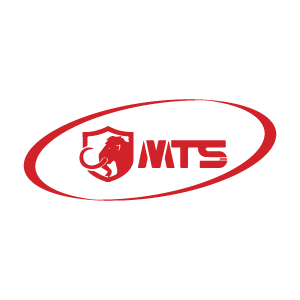
Introduction
Dante is a popular audio networking technology that has revolutionized the way audio signals are transmitted and processed. Dante is an acronym for Digital Audio Network Through Ethernet, and it refers to a system that allows multiple audio devices to be connected over a standard Ethernet network. The technology was developed by Audinate, a company based in Sydney, Australia, and has been widely adopted by the professional audio industry. In this article, we will discuss the key features and benefits of Dante and its applications in modern audio systems. Dante is a technology that provides audio over IP (internet protocol) networking solutions. It allows the transmission of high-quality, multi-channel audio over standard Ethernet networks.
Features
One of the key features of Dante is its low latency and high-quality audio transmission. Dante uses standard Ethernet networks to transmit audio signals, and it has been designed to provide near-zero latency and low jitter, ensuring high-quality audio transmission. This makes it ideal for use in professional audio applications, where high-quality audio is essential.
Another key feature of Dante is its scalability. Dante allows multiple devices to be connected to a single network, making it easy to expand the system as needed. This is particularly useful in large-scale installations, such as concert venues and sports arenas, where a large number of audio devices must be connected to a single network. With Dante, additional devices can be added to the network as needed, making it a highly scalable and flexible solution.
How Dante Works
The technology works by breaking down audio signals into small packets of data and transmitting them over an IP network. The packets are then reassembled at the receiving end to produce the original audio signal. Dante uses a software-based approach that provides flexible and scalable audio routing and distribution, making it ideal for use in a variety of applications, including live sound reinforcement, broadcast, recording studios, and more.
Dante also provides low latency and high reliability, which are critical for many professional audio applications. The technology is designed to be easy to use and integrate into existing networks, and it supports a wide range of audio formats and sample rates.
Benefits of Using Dante
Dante is its compatibility with other audio networking technologies. Dante is designed to be compatible with other networking technologies, such as AES67 and AVB, making it possible to integrate Dante-enabled devices with other audio systems. This can be particularly useful in applications where multiple audio systems must be integrated to provide a seamless user experience.
Dante technology provides several benefits for audio professionals, including:
- Flexibility: Dante allows the routing and distribution of audio signals over standard Ethernet networks, providing greater flexibility in system design and configuration.
- Scalability: Dante supports large-scale networks, making it possible to expand a system as needed.
- High Quality: Dante provides low latency and high-quality audio transmission, making it suitable for use in demanding professional audio applications.
- Interoperability: Dante supports a wide range of audio formats and sample rates, and it is designed to be compatible with a variety of audio devices, including digital consoles, speakers, amplifiers, and more.
- Ease of use: Dante technology is designed to be easy to use, with a user-friendly interface and intuitive configuration tools.
- Cost-effective: Dante eliminates the need for dedicated analog cabling, reducing the cost of system installation and maintenance.
- Network Integration: Dante integrates easily into existing IT networks, allowing for seamless integration with other technologies and systems.
Products that uses Dante for Productions
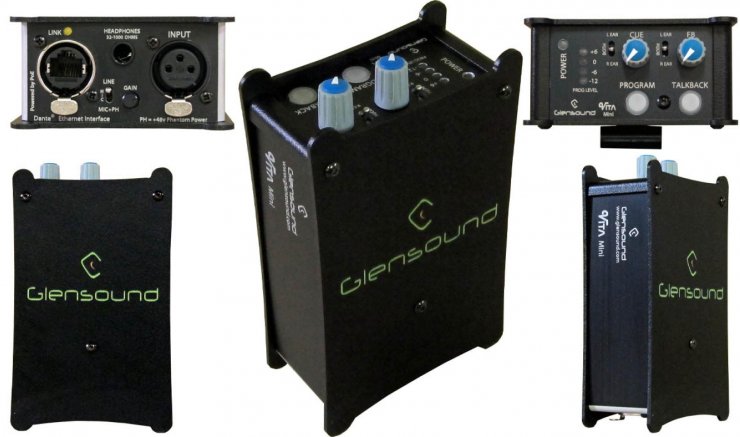
The VITA Mini is a very powerful Dante® network audio interface, in a compact belt pack style. It has a mic/line input and headphone monitoring connection for a single user, and contains two 4 wire circuits. One of these is typically used as an on air channel, and the other as a talkback channel.
The high quality microphone input, with the Glensound Referee compressor, makes the Vita Mini suitable for on air commentary use, particularly when pitch side.
The flexibility of the talk button configurations, means that the Vita Mini can also be used as a talkback unit as part of a Dante® or AES67 network.
VITA Mini is a low cost yet high quality broadcast tool, designed to keep both the company accountant and engineering department happy.
Application
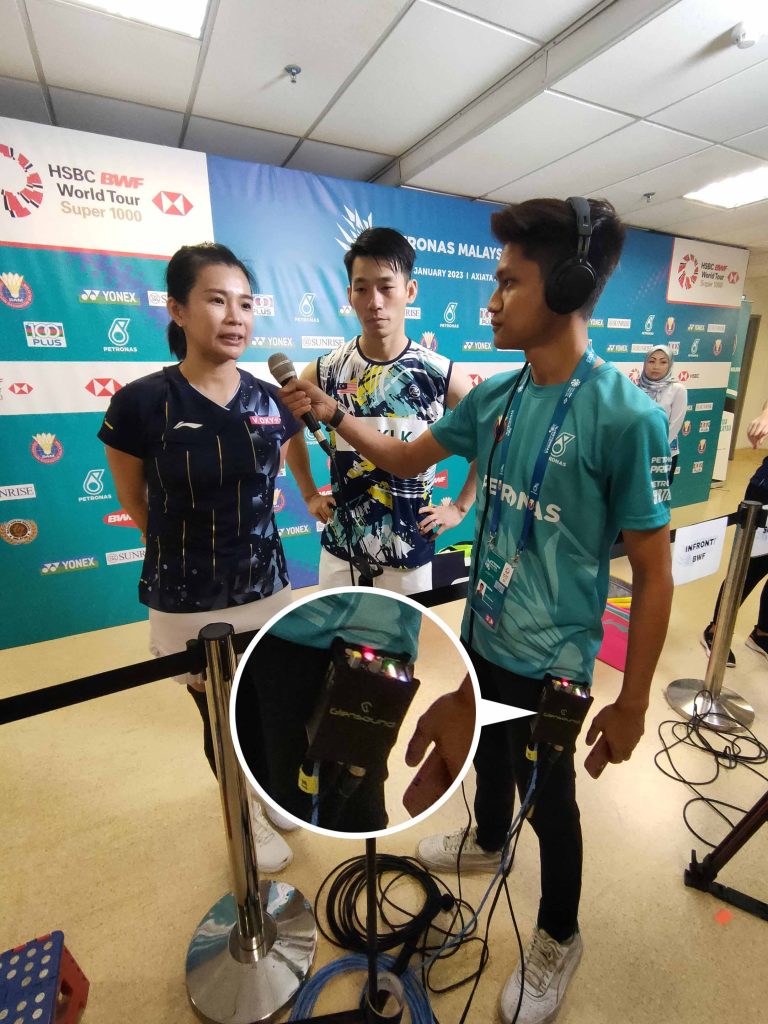
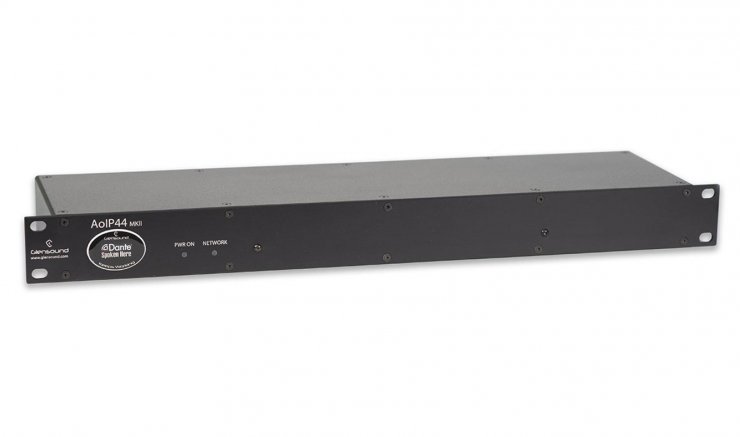
The AoIP44 is an economical subrack designed to interface balanced analogue audio circuits to and from a Network audio system featuring Dante. It provides 4 audio inputs to the network and also 4 audio outputs from the network on balanced 3 pin XLRs. As well as being mains powered with the standard signature backup DC powering option, the AoIP44 can be powered from an external PoE source via its network interface.
The AoIP can be used as a simple low cost audio I/O break out unit on a large Dante audio network where it can be integrated extremely easily using the Dante controller and is fully compatible with any manufacturers Dante equipment. It can also be used in very simple audio over IP scenarios where just 4 bi-directional audio circuits are needed to be distributed across a building’s network infrastructure, in which case 2 x AoIP44 units can be used connected together across the network. The AoIP44 is equally suited for high integrity broadcast purposes, intercom, just simple paging facilities or simple distribution of non-critical audio.
Application
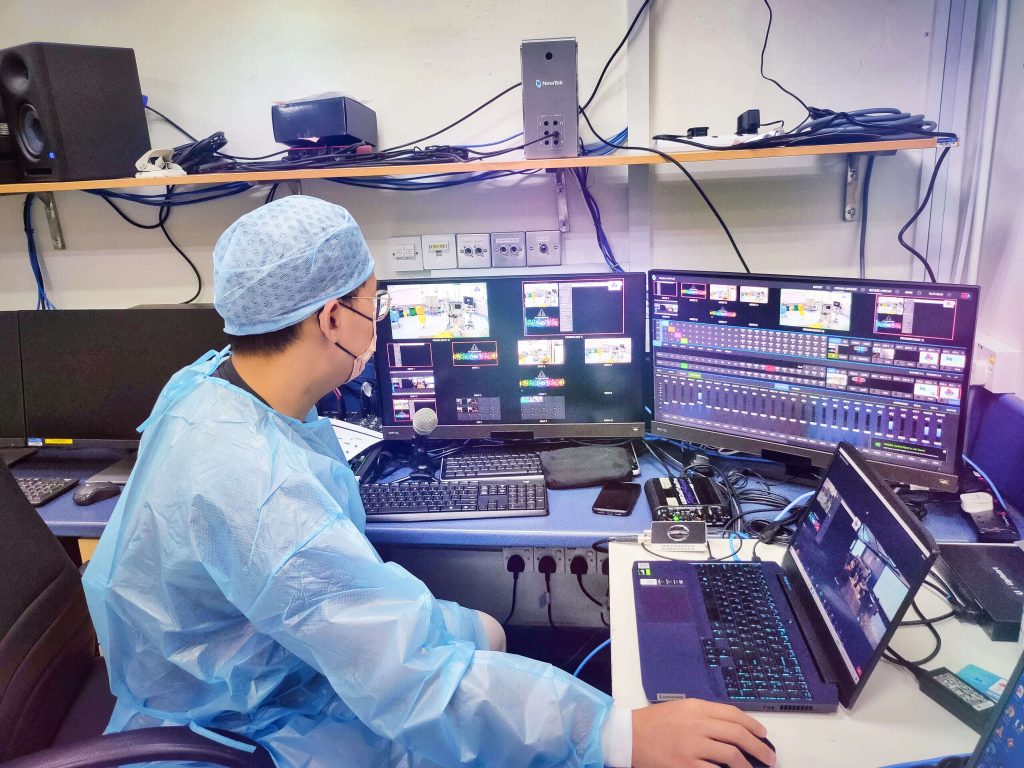
We are here to help
Our Stories
Read more about our stories that uses Dante Products
Email Us
Drop us an email if you like to know more






















